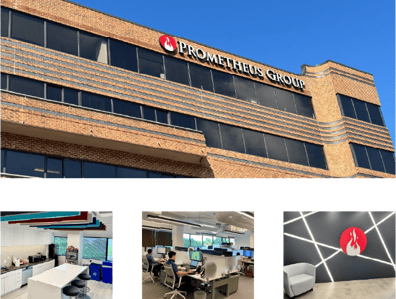Digital permitting systems designed for enterprise asset management outperform paper systems on every conceivable metric, including cost. They provide increased safety, reduce incidents, and make investigations of any incidents that do occur much easier to track. Electronic permit to work systems that integrate with your EAM, ERP, or CMMS have even greater advantages.
Justin Fox of Prometheus Group discussed this topic in 2019 in his blog, "7 Reasons Paper Permitting Is the Worst." His points outlining the challenges of maintaining a paper-centric environment – increased risk, conflicts with hazards and isolations, dangerous add-ons, wasted time, compliance problems, culture problems, and higher costs – still stand.
Below, we've identified four more reasons why paper permitting is still the worst.

1. Lack of Adaptability
Paper systems are very slow to adapt to changing conditions. In comparison, a team can configure digital control of work systems very quickly. The pandemic threw this difference into stark relief as COVID-19 put a brand-new safety issue on everyone’s radar. Even small changes to paper permitting systems requires more investment than greater adaptations made to electronic control of work systems.
A well designed digital permitting system is re-configurable when conditions warrant. Prometheus Permitting & Safety also ties into a robust management of change workflow, integrating with existing processes and systems.
2. Lack of Scalability
Scalability refers to the ability of a system to grow when more resources are added. The ability to scale doesn’t apply to every system but that may not be obvious at first glance. The classic example involves package delivery. Adding more delivery drivers should allow the business to scale, but not if everything goes through one warehouse. In this case, the capacity of the warehouse defines the limit. Hiring more drivers and buying more trucks will not increase the warehouse’s capacity.
The key point of scalable systems is that they can rise to meet demand. Paper systems have very limited scalability at the best of times. Anyone who’s seen a long line at the permit hut can tell you that. A scalable safe control of work system gives you the ability to issue permits at whatever number is required, copy multiple jobs, and build packages or bundles of permits.
Digital systems surpass paper on potential for scalability in every way. It’s important to bear in mind that merely being digital does not make the system scalable. In fact, scalability is usually discussed as an attribute of digital systems. Realizing the benefits of scalability for permitting requires a solution that builds it in.
3. Lack of Repeatability.jpg?width=805&height=603&name=60e60929a946ae7b7cac0dc9_AdobeStock_164380820-1%20(1).jpg)
Paper systems are not repeatable. One of the advantages of digital permitting is that the work can be duplicated. When you spend an hour writing a permit in a digital system, that’s an hour that you don’t have to spend next time…or ever again. The permit could have been written five days ago or years before. It’s still ready and waiting.
Naturally, every permit still has to go through the proper review and approval process, but the writing time is substantially reduced. The library of available permits increases as more and more permits are created and entered into the system. Eventually, you have permits that cover almost any situation. Not only do you reduce permit writing time, staff in charge of writing permits can concentrate their efforts on permits needed for unique or unusual situations.
4. Printing Costs and Hardware
These costs are relatively minor, but it’s always of benefit if you can save money without sacrificing quality or efficiency. Rob Errera of TonerBuzz goes in-depth into how to calculate this figure in his article, “Printing Costs: How To Accurately Calculate Your Printing Cost Per Page.”
Let’s do a rough calculation to provide some idea of how much printing permits and isolations is costing you.
Your permit printing costs are likely somewhere between five and 10 cents per page for paper and ink. It’s probably nearer the high end of that range, as permits are very information-dense documents.
Even small and medium-sized organizations may print thousands of permits and isolations every year. Some larger organizations produce more than a million permits per year across their sites.
Let’s make the math easy. Assume you’re paying 10 cents per page and you’re printing out 100,000 permits and isolations every year. That’s $10,000 spent on paper and ink, year after year after year. At the low end of printing costs, it’s sucking up $5,000 a year.
This is not a huge figure compared to other maintenance costs, but it’s still money out of your pocket. Could your department use an extra $10,000 a year?
Note that this is the least of the cost savings that digital permitting can bring you! As Justin Fox put it in his blog on this topic, “…every reason we’ve discussed so far can boil down to cost.” Digital permitting and safety systems that integrate with your EAM, ERP, or CMMS invariably end up saving your organization money. The savings you will realize from improvements to permitting and safety, including a reduction in incidents and investigations, far outweigh the savings from eliminating printing.
For more information on making the leap to digital from paper, check out "The Calculated Benefits of Electronic Permit to Work Systems" or contact us today.



